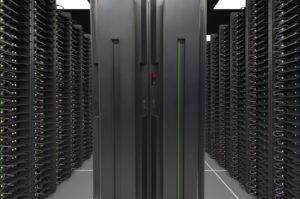Poor/no workflow engine
One of the tell-tale signs that your vendor is behind the times is that the system is built only for IT ticketing. Even if your organization only wants a solution for tickets right now, that will likely change one day. There’s so much more you can do with a single, unified service management solution right now, including automating complex workflows and communication around regular processes. Your solution needs to help you map out workflows in the modern age.Poor/no service portal
If you’ve ever heard the complaint that users don’t know the status of their ticket or request, you probably have the wrong help desk solution. One of the primary goals of the help desk is to enable employees to overcome technical issues and get back to their jobs, but they can’t do that if they feel their ticket is lost in the ether. Make sure your solution has a user-friendly service portal where they can request services, find knowledge articles, and track the status of everything they’ve requested.Lacking ITIL functionality
Though ITIL is not a one-size-fits-all approach, your solution should enable your organization to fit its service delivery into the ITIL framework. Though that may look a little different for each organization, you’ll want robust functionality in incident, problem, change, and release management. If your solution is light in any of these areas, it will lower your ceiling for service delivery.Complex agent experience
Functionality is one thing. User experience is another. Why use a system that requires weeks of training for new technicians? Maybe this solution can technically meet all of your needs, but the value takes a major hit when it requires dozens of clicks and tabs to perform simple tasks. Look for something with clean, customizable views for incident queues, intuitive user experience, and easy setup for advanced ITSM functionality.
No asset management
It’s inexcusable to separate IT asset management from IT service management in today’s environment. Users and their assets are fountains of data that can help you connect them to their needs very quickly. Almost every incident involves a user and a device, and most of them also involve an application, a piece of software, or another tool that you can track. This will help connect employees with self-service, plan for change management, and deliver the fastest possible solutions.Unable to populate users automatically
Employees come and employees go. The larger an organization, the more you’ll need to provision and deprovision users. Still doing it manually for both your service desk and your single sign-on solution? Time to upgrade to a service desk that partners with Okta, OneLogin, LogMeIn, Centrify, Microsoft Azure, Google, or any other solution you use.
No automations for tickets
Today’s help desk solutions allow you to create roles and groups to handle certain types of tickets. Based on certain data points you collect upon submission of the ticket, you can automatically route a ticket based on keyword, category, site/department, and any number of other factors. This could help you align specific incidents with the groups best equipped to handle them. For instance, maybe you have an Apple support team that deals with Mac laptop issues. Your solution should allow you to create an automation for that.No artificial intelligence
You purchased a help desk solution to make your life easier. The latest technology in artificial intelligence and machine learning helps make that a reality through suggested solutions for self-service and suggested categories and subcategories to assist with those automation rules. Your organization adds to its history of service data every single today, and the modern solution is constantly learning from this data to help lead both your employees and your technicians to the right places.
Will not integrate with other tools/data
Perhaps you’ve heard one of today’s most common buzz phrases, “digital transformation.” As your organization continues to add technology to solve business problems, you’ll want to make sure that technology is connected (especially through support) with integrations. The modern ITSM platform is not just for ticketing. It creates workflows that automate actions in other tools and applications. It shares user and service data with the technology your organization already uses. It tracks every asset, subscription, contract, and piece of software to help you identify the places your organization can improve with technology.No customizable groups and/or roles
Not all users fit into a cookie cutter. Some deal with software tickets and some handle hardware issues. Some need purchasing approval power. Some don’t need to see that sensitive HR data. If your solution won’t allow you to build these groups of technicians with specific permissions, it’s time for an update. Say goodbye to the mountain of tickets in the general queue, and start dividing up the work according to the role and skill set.Unable to scale beyond IT
Let’s face it. IT is not the only service provider in the organization. Human resources, facilities, sales, and marketing all deliver specific services. From business cards to benefits updates, every type of employee request could use some formally automated workflow behind it. IT has already seen the success of building these processes with automated tasks and approvals, and your solutions should allow you to scale that strategy to the rest of the organization. With customizable roles, views, and language for each licensed user, you’ll be on your way to an organization-wide service management strategy.Solution is on-premise
Any time spent on maintenance and administration of your on-premise solution is too much time. Stop investing in 24/7 on-site support, consulting, and other costs associated with the archaic on-premise solution. With a cloud-based, multi-tenant solution, you can seamlessly deploy updates, implement new functionality, and minimize traditional support needs associated with service management.









